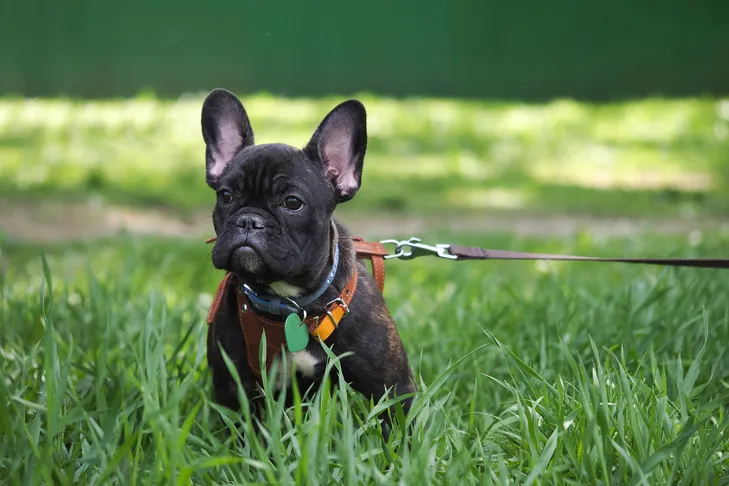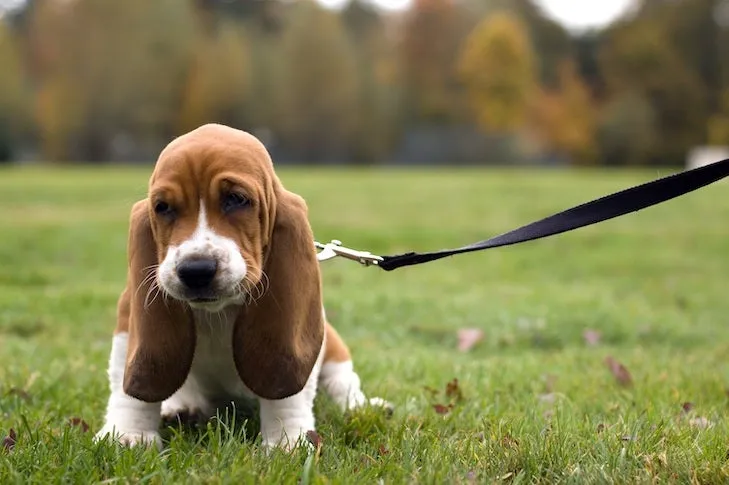Many new dog owners assume that puppies instinctively know how to walk politely on a leash. However, this essential skill is developed through patient and consistent training. Mastering how to teach your puppy to walk on a leash is a rewarding endeavor that will transform your daily outings into enjoyable experiences for both you and your canine companion. Renowned dog training expert and AKC Family Dog columnist, Kathy Santo, provides invaluable insights and practical tips to help you build a strong foundation for successful leash walking.
Laying the Foundation for Leash Walking
Introducing the Collar, Harness, and Leash
The first step in how to teach your puppy to walk on a leash is familiarizing them with their gear. Let your puppy wear a lightweight collar or comfortable harness for short periods inside. Make these sessions positive with playtime and treats. The goal: associate gear with fun, making leash time enjoyable.
Establishing a Positive Cue
Establish a sound cue meaning ‘food is coming!’ (e.g., a clicker, ‘yes’). In a quiet area, with gear on, make the sound. The instant your puppy looks at you, reward them. After repetitions, they’ll eagerly approach you, anticipating reward. This builds crucial focus.
 French Bulldog puppy wearing a comfortable harness, sitting attentively in lush green grass with a leash, ready for a training walk.
French Bulldog puppy wearing a comfortable harness, sitting attentively in lush green grass with a leash, ready for a training walk.
Encouraging Your Puppy to Come to You
Once they understand the cue, encourage movement towards you. While they approach, take a few steps backward. Reward generously upon arrival. Gradually extend distance, teaching them to come and walk a few paces. Keep sessions brief, ending positively. For more on this, explore how to train a husky puppy to come.
Practicing Leash Skills Indoors
With responsiveness established, practice walking indoors in low-distraction. Leash sensation is challenge enough. Offer praise and treats as they learn to move with you. This builds confidence without outdoor overstimulation. For guidance on timing, consider when to start a puppy on a leash.
Venturing Outside with the Leash
Finally, test leash skills outdoors. New sights/sounds/smells present challenges. Be patient; keep initial walks short, positive. If your puppy is about to lunge or distract, use your cue and move away. Reward for following. This proactive approach helps them re-focus, reinforcing proper how to teach your puppy to walk on a leash habits.
 A cute Basset Hound puppy sitting calmly in lush green grass, wearing a leash and harness, looking attentive during an outdoor training session.
A cute Basset Hound puppy sitting calmly in lush green grass, wearing a leash and harness, looking attentive during an outdoor training session.
Troubleshooting Common Leash Training Challenges
Even after initial success, challenges may arise. The ultimate goal is loose-leash walking, making outings pleasant and preparing for advanced obedience. The AKC GoodDog! Helpline offers advice for issues like how to get your dog from pulling on the leash and managing other behavioral quirks.
Dealing with a Pulling Puppy
If your dog pulls, become a ‘tree.’ Stand still until they relax the leash and re-focus. Avoid yanking or dragging. For persistent pullers, consider front-hook harnesses or head halters to redirect their strength and encourage better manners.
Addressing Lunging Behavior
Should your dog lunge at triggers – another dog, car, skateboarder – be proactive. Redirect focus with a treat before they lunge. Increase distance from the trigger. Stay vigilant to create space. While common in some breeds, any dog can be overstimulated. For other outdoor challenges, like a puppy eating everything outside, proactive management is key.
Managing Excessive Barking on Walks
If your dog barks excessively, ensure proper mental and physical stimulation. If barking persists, use the same proactive strategy as for lunging: create distance and offer treats before the barking starts. Consistent positive reinforcement teaches your dog to focus on you instead of reacting negatively.
Gradually, you’ll reduce constant treats and troubleshooting as your puppy’s leash manners solidify. However, always keep treats on hand for random reinforcement. Consistency, patience, and positive reinforcement are cornerstones of successful leash training. Mastering how to teach your puppy to walk on a leash builds a stronger bond and ensures countless happy, safe adventures together. For persistent challenges, expert help is always available.
Need professional help with your adorable new puppy? The AKC GoodDog! Helpline connects you with professional trainers for individualized advice on everything from house-training to behavioral issues.
